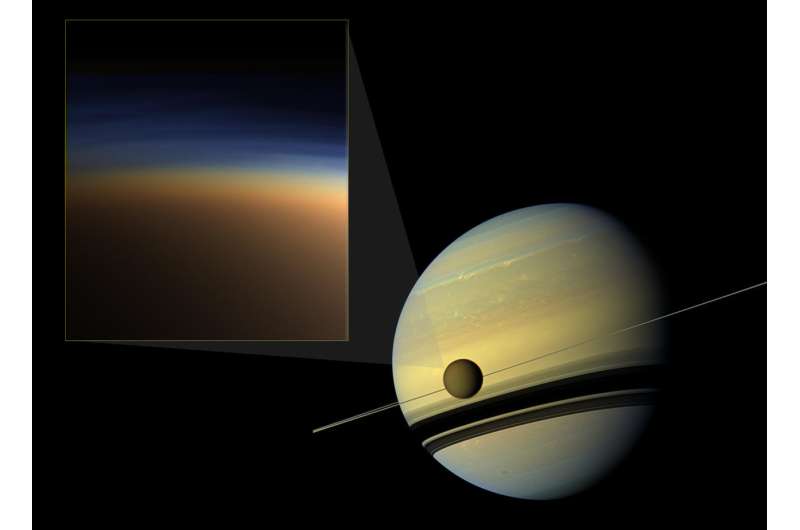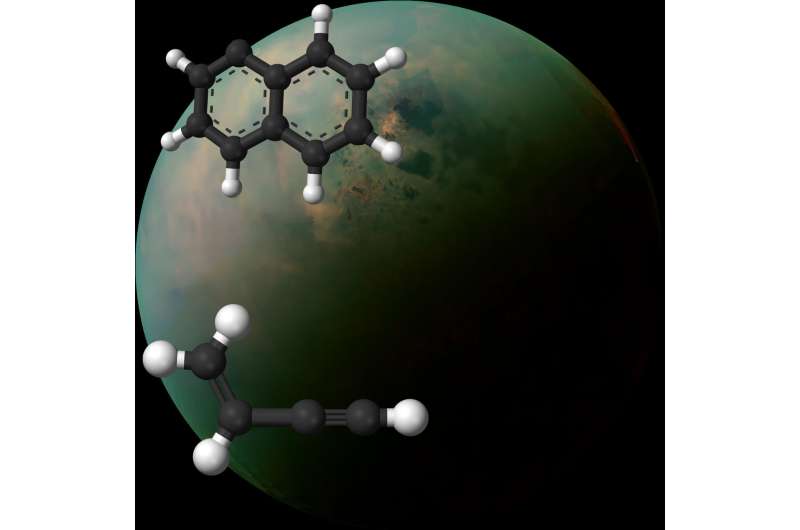Saturn's largest moon may hold key to cleaner engines

A new discovery on Titan's haze is revealing new information about burning fuels on Earth.
Florida International University chemist Alexander Mebel and a team of international researchers have been studying Saturn's largest moon, trying to unlock a mystery brewing beneath Titan's thick, hazy atmosphere—How is it that dunes of hydrocarbons exist on the moon's frozen surface?
On Earth, the kinds of hydrocarbons that cause soot are only known to occur during the combustion process under very high temperatures. They are the kinds of byproducts that engineers usually try to eliminate when engines burn fuel.
By examining data from NASA's Cassini-Huygens probe, the researchers determined hydrocarbons can form the type of complex chains that create Titan's orange-brown haze layers at temperatures as low as 90 degrees Kelvin, which is about -298 degrees Fahrenheit—that's nearly 330 degrees below freezing on Earth.
According to the researchers, this provides evidence that a low-temperature reaction pathway not previously considered could provide a missing link in Titan's chemistry and yield clues to the development of complex chemistry on other moons and planets including Earth.
"Our calculations revealed the reaction mechanism," Mebel said. "We showed that you don't need any energy to drive the reaction of naphthyl and vinylacetylene, so the reaction should be efficient even in the low-temperature and low-pressure atmospheric conditions on Titan."

Provided by Florida International University



















